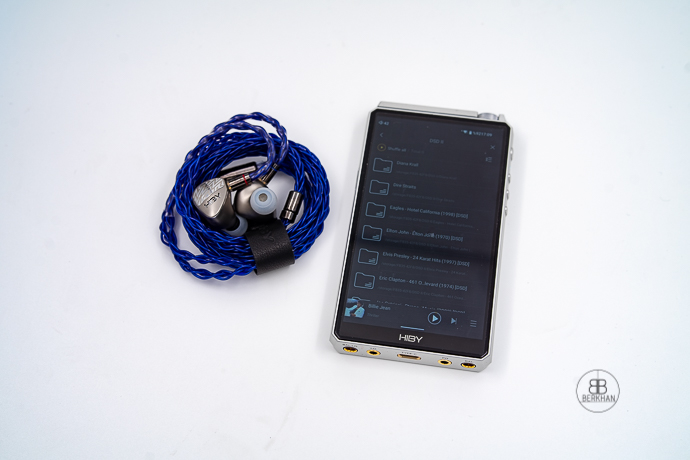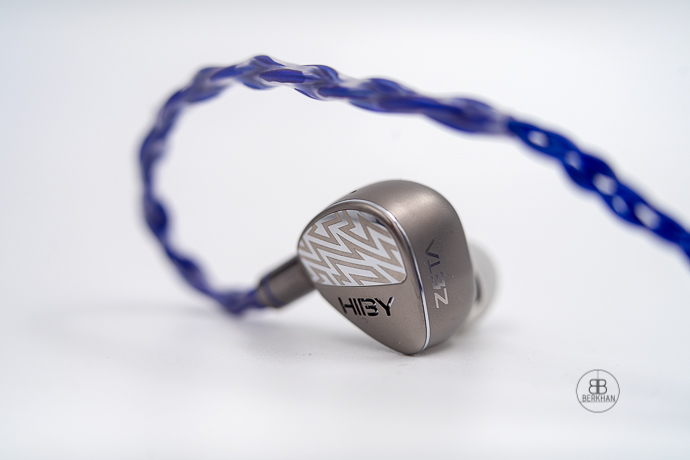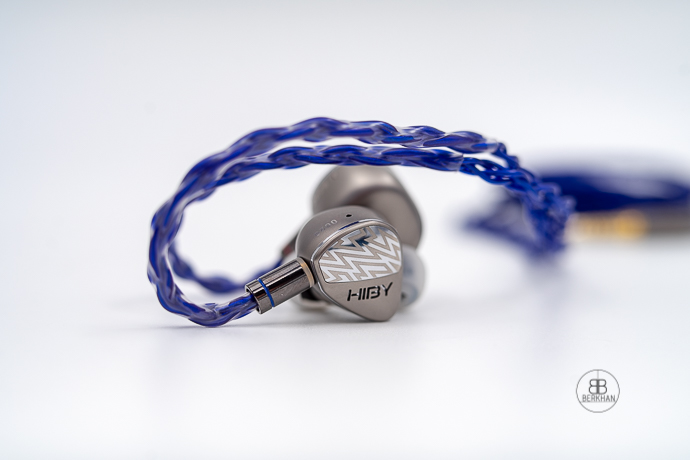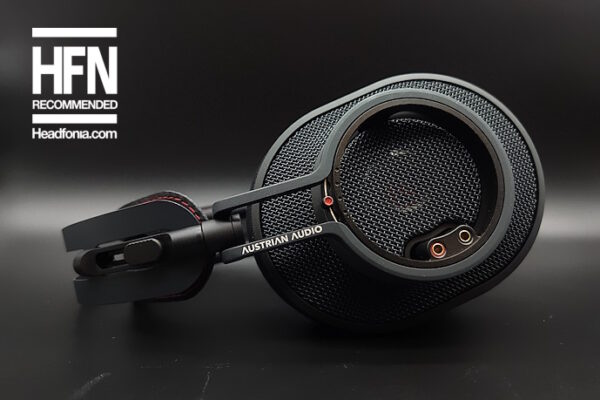Technical Performance & Synergy
Zeta is technically a very capable IEM. Particularly in terms of layering and texture, it’s quite strong. Note weight is fabulous, and the fullness in the mid-range is somehow addicting, Overall resolution -despite this very full, bassy and warm presentation- is pretty good. The mid-range has nice transparency, especially in vocals.
The staging is not incredible, but it has reasonable room, yet the domination of the bass makes the stage a bit narrow. Depth is very nice though, and considering this particular, fun presentation, I would say the stage has good room in both directions. Imaging is quite strong, with good L/R balance, good focus and separation. I liked the musical and smooth timbre/delivery in the Zeta, together with great coherency. Indeed, this coherent performance makes you want to listen to more tracks from your archive.
For synergy, pairing with warm sources, such as the legendary WM1Z is a no-go. I would recommend something like HiBy’s own R6 III, or an SE180 with the ESS SEM3 module. I mostly listened to the Zeta with the flagship RS8, although it’s debatable if it’s the best match since the RS8 tends to be on the strong side when it comes to bass. So it would be best to pair this IEM with relatively neutral, or even analytical sources.

Comparisons
At around the same price, EA Gaea is one of the most popular IEMs lately in this range. Packaging wise it’s more artistic, although these two have similarly good accessories with a premium approach. Design-wise Hiby is more serious with titanium, whilst Gaea appeals to artisanal lovers. Zeta has a better build, and Gaea looks more organic. They both fit well, but I think Zeta is more ergonomic for my ears. Yet, Gaea’s cable is better in my opinion.
Sound-wise, Gaea’s bass is impactful in the sub-range, but it’s overall nowhere near Zeta in terms of pure impact, rumble and overall quantity. Zeta has an incredibly effective bass, with great impact. So they’re very different right from the start. Mid-range is thinner in the Gaea, whilst Zeta delivers much thicker, with greater note weight. Zeta’s warm tonality is addictive. Yet, I think Gaea has better clarity and transparency overall. Treble is more articulated and extended in the Gaea. Zeta delivers them in a smoother, thicker nature.
Gaea sounds wider, Zeta sounds deeper in terms of staging. So basically Gaea has an upper mid-range focused, thinner and more spacious presentation. Zeta has a much warmer and ”bigger” sound.
CA F5 is another warm-sounding example which is also a tribrid. When I compare packaging, Hiby has a much better presentation, with more/better accessories. Zeta also has better build quality. Fit is better with the CA offering, with smaller shells.
F5 is also a warm, bassy tribrid that has an enjoyable, fun sound. However, Zeta takes this bassy presentation further and puts on a show with an incredibly textured, hard-hitting bass which is deeper and thicker. F5’s bass is just a bit quicker, but Zeta has more impressive decay. Mids are warm in both, with musical tonality. However, F5 puts the mids on the back of the stage, whilst Zeta, despite its heavy bass focus, somehow manages to put the mid-range where it belongs; the centre. Yes, there’s a slight upper mid-range emphasis, but still, it has a good balance there.
Treble is better in the FIBAE 5 in my opinion. It sounds crisper, has more micro details, and has more extension with better definition. Zeta appears to be darker and thicker in that regard.
Softears Twilight is a single dynamic driver IEM. So it has a much simpler acoustic design, at least on paper. The unpacking experience is similar to Zeta’s, so no big difference there. They both have good builds, with Twilight being an aluminium IEM versus Zeta being a titanium. However, I have to say, the Zeta is more impressive in that regard. Fit-wise the Twilight is a bit of a hustle. It’s not easy to find the best ear tips, since the design is completely different from most of the IEMs on the market. Zeta simply fits much better.
Twilight’s sound presentation focuses heavily on the mid-range. Its bass and treble don’t extend that much, so it’s a mid-centric monitor. Zeta is completely different. It focuses on the bass and has a similar mid-range which is also warm and full. Its treble performance is a bit better than the Twilight, with better definition, especially in micro details. It also has a bigger soundstage.

Conclusion
With the Zeta, Hiby shows that they’re not in this business with their DAPs only. With their unique titanium material expertise, they seem to create a very compact, unique, and very sturdy tribrid IEM which looks and feels fantastic.
Not only that, but Hiby has created a very enjoyable, toe-tapping IEM which is full of fun, especially with that special bass response. That dynamic driver is something for sure, and the bass texture/rumble is simply ecstatic.
Pros:
- Great Design
- Fantastic Material Quality
- Nice Packaging & Accessories
- Great Bass
- Musical/Full MidRange
- Good Fit
Cons:
- The cable could’ve been better
- Bass might be too much for some
- A little more clarity wouldn’t hurt








Steve
eadfonia.com/hiby-zeta-review/
Hi, mr. Berkhan.
Thank you so much for your patient experience and detailed review. We appreciate your many positive comments and compliments about Zeta, and we also appreciate the suggestions you have made. Regarding the design of the original 8-core PCOCC cable, there is a special meaning behind it actually, and we have presented when we announced Zeta in China at the first time. The implied meaning of the “blue/purple” color is actually the color of Lapis Lazuli, which is a special blue color that has contained the imprint of global cultural exchange throughout human history. From ancient Egypt to ancient Babylon, from the Northern and Southern Dynasties and Tang and Song dynasties in ancient China to the Renaissance in Europe, we can see the presence of lazuli blue – from the golden mask of Tutankhamen, the Ishtar Gates , the Dunhuang’s Mogao Caves murals, to the frescoes of Giotto and the oil paintings of Raphael and so on. As I know, before the 18th century, natural blue was not easy to get, and the lazuli blue, a unique warm blue color with a slight purple tone, which was 90% originated from Afghanistan. Therefore, it was highly sought after by artists. The texture of lazuli blue is both uplifting and calming, providing a vast imagination and relaxing experience.
The cable is the bridge that connects the earphones to the DAPs. And as the first flagship IEM from HiBy, Zeta is also an important audio product that was released for the first time after three-year pandemic period. We deliberately broke away from convention and designed a cable color that is similar to lazuli blue, symbolizing our love to music and our desire to restart communication in diverse cultures.
To reiterate, the above is not meant to express any dissatisfaction with your sharing and views, but rather to supplement and explain the original intention behind the design of the cable color. Thank you deeply again, and I hope this would not disturb you.